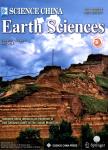First observation results of Macao Science Satellite 1 on lightninginduced electron precipitation
作者机构:Key Laboratory for Polar Science Ministry of Natural Resources Polar Research Institute of China Institute of Space Physics and Applied Technology Peking University State Key Laboratory of Lunar and Planetary Science Macau University of Science and Technology School of Earth and Space Sciences University of Science and Technology of China School of Electronic Information Wuhan University
出 版 物:《Science China Earth Sciences》 (中国科学:地球科学(英文版))
年 卷 期:2024年
核心收录:
学科分类:07[理学] 070601[理学-气象学] 0706[理学-大气科学]
基 金:supported by the National Natural Science Foundation of China (Grant Nos. 42230202, 42130210) the National Key Research and Development Program of China (Grant Nos. 2021YFA0718600, 2023YFC808905) the Space Science Pilot Project of the Chinese Academy of Sciences (Grant No. XDA15350202)
摘 要:The mid-energy electron detector (MEED) is a space-borne instrument onboard Macao Science Satellite 1 (MSS-1)dedicated to monitoring the typical charged particle radiation characteristics in the satellite orbit and the process of their occurrence and development, including short bursts of lightning-induced electron precipitation (LEP). This paper presents the first results of the LEP measurements by the MSS-1.47 LEP events are identified with the routine operation for 3 months since satellite launch, all within the range of 1.5L3.0 (where L represents the McIlwain L-parameter), and the causative lightning discharges are definitively geo-located for these LEP events. The LEP events occur within 1 s of the causative lightning and consist of 40–300 keV electrons. A preliminary observation result indicates that, with medium-energy electron detectors, MSS-1can present in-situ observations of large regions of enhanced background precipitation and reveal their fine spatiotemporal characteristics and spectral signatures. The collaborative VLF ground-based measurements at the Great Wall Station, Antarctica also have a good correspondence with LEP measurements of MSS-1. The observations also imply that lightning activity has a modulation effect on the energetic electron energy-spatial structure.



